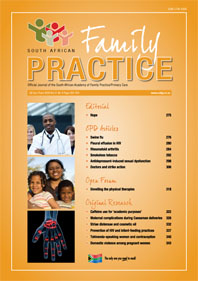Accidental Hand-Grenade Blast Injuries in the Transkei Region of South Africa: A Case Report
Keywords:
Bomb blast, explosion, handgrenade, public health
Abstract
During the apartheid era in South Africa explosive blasts were common. Transkei was the lynchpin of the government’s homeland policy, and a major centre for the struggle against apartheid. Weapons and ammunition were stolen from the South African factories and army warehouses and were stored in safe places in Transkei. This is a report on a group of children who were herding cattle in a field and found an M26 hand grenade. They were playing with it when it accidentally detonated. Six of the eight children died instantly, while the other two sustained minor injuries. The M26 hand grenade had been designed to harm by expelling high-velocity fragments. The result is extensive mutilation of the body, particularly to those close to the blast. In this report the nature and severity of injuries are described. The mechanisms of injury and possible criteria used to predict injuries caused by explosions are discussed and preventive measures are suggested.
Published
2009-06-09
Section
Case studies
By submitting manuscripts to SAFP, authors of original articles are assigning copyright to the South African Academy of Family Physicians. Copyright of review articles are assigned to the Publisher, Medpharm Publications (Pty) Ltd, unless otherwise specified. Authors may use their own work after publication without written permission, provided they acknowledge the original source. Individuals and academic institutions may freely copy and distribute articles published in SAFP for educational and research purposes without obtaining permission.

